|
|
|
|
Products mentioned in this Article
--None--
|
|
|
|
|
|
|
|
|
 |
|
|
Crete:
May 1941
Diving Eagles
by Chris Townley
The Battle for Crete would see the elite, but
numerically inferior, German Fallschirmjägers and Gebirgsjägers thrown
against the battered and poorly equipped British, Australian, New
Zealand, and Greek defenders that had been evacuated prior to the fall
of Greece. Protected by the Royal Navy, these meager forces were now
situated on an island that sat along the vital convoy routes between
Rommel’s Afrikakorps in North Africa, and the vital oil fields in
Romania. Codenamed Operation Merkur (Mercury), the assault on Crete
would have to come from the one direction that the Royal Navy could not
influence – the sky! |
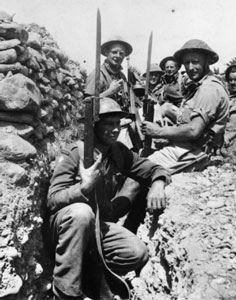
|
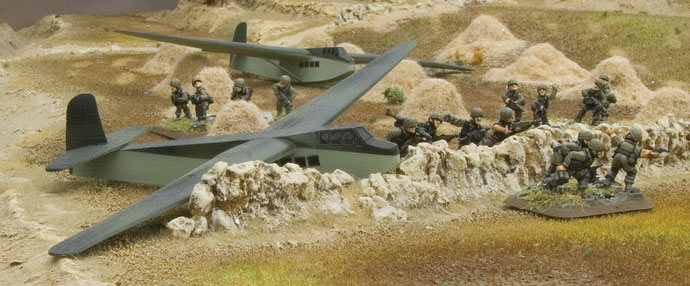 |
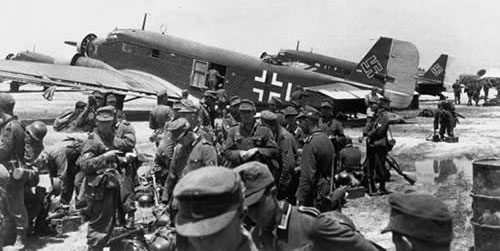
|
Whilst the Battle for Crete took twelve days, it is the actions in and
around the airfield at Maleme that, with the benefit of hindsight, had
the most overall affect on the final outcome of the entire battle.
Early
in the morning of May 20, the Luftlandesturmregiment landed first when
the gliders of Sturmbataillon ‘Koch’ captured the bridge over the dry
bed of the Tavronitis River and the anti-aircraft guns protecting the
Maleme airfield beside it. |
Once the gliders touched down and hit secured their objectives the first of the paratroopers started to land amongst the
defending New Zealanders. Despite heavy casualties these small groups
quickly formed up and began to conduct hit-and-run attacks as they
gathered their strength (and weapons).
|
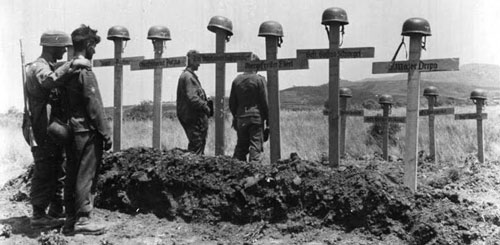 |
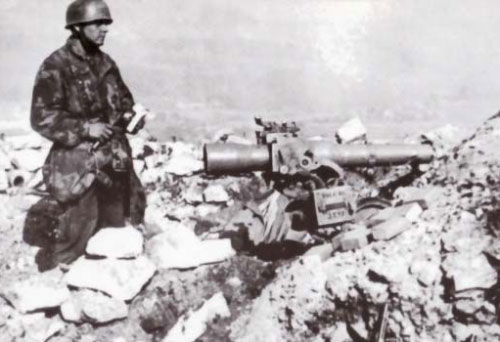 |
Above Maleme airfield on
Hill 107 the 22nd New Zealand Battalion under the command of Lieutenant
Colonel L.W. Andrew, VC, began to feel the pressure of the attacking
paratroopers. With too few men and a lot of ground to cover it was not
long before the option of withdrawing and consolidating the lines was
being considered. By the evening, a combination of poor communications
and sustained pressure lead to the fateful decision to pull back from
Hill 107. The following morning, with Maleme airfield open for business,
the Fallschirmjägers received desperately needed supplies as six
aircraft completed a test re-supply. |

|
| With the situation at Maleme
deteriorating, General Freyberg, VC ordered a night attack to counter
the German advances but due to a variety of reasons the attack did not
move out on time, nor were there sufficient men to complete their
objectives. By the afternoon of May 22 fresh Gebirgsjägers (mountain
troops) were landing at the airfield at a rapid pace and the German
advance began in earnest. Whilst the Battle for Crete would rage on for
another 10 days, the tide had turned. |
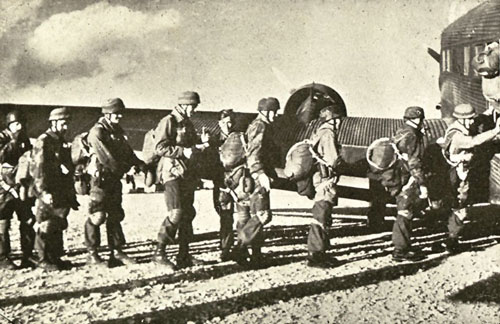 |
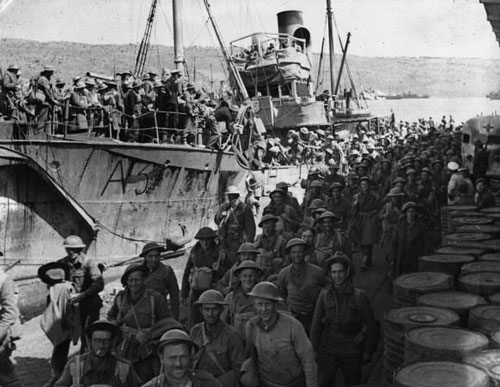 |
The Battle for Crete would have far reaching implications for both
sides. For the Germans it would be the last time the Fallschirmjäger
would be used in an airborne operation of this scale as the casualties
in terms of both men and machines made victory bitter sweet. As for the
Allies a large proportion of the defenders would be taken prisoner,
despite the valiant efforts of the Royal Navy to evacuate as many troops
as possible. In the years since the end of the
war there has also been considerable “finger-pointing” by historians
looking for someone to shoulder the blame for the fall of Crete and
whilst it does not change the outcome it can make for some
interesting
reading.
~ Chris. |
Prague:
May 1942
The Assassination of Reingard Heydrich
by James Brown
One of the most ruthless and determined members of the Nazi elite, Heydrich rose rapidly through the ranks of the SS, eventually heading the security agencies of the Nazi State. Most notoriously, he was one of the main architects of the Holocaust. He chaired the Wannsee Conference in 1942, where senior Nazi leadership finalised their plans for the extermination of the Jewish population of Europe.
In 1941 Heydrich was appointed acting Reichsprotektor of the Protectorate of Bohemia and Moravia, because Hitler that the nominal Reichsprotetktor, Konstantin von Neurath, was too soft on the native Czech population. Heydrich’s brutal suppression of Czech resistance to German rule earned him the nickname, ‘the Butcher of Prague’.
|
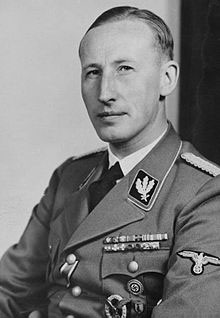 |
 |
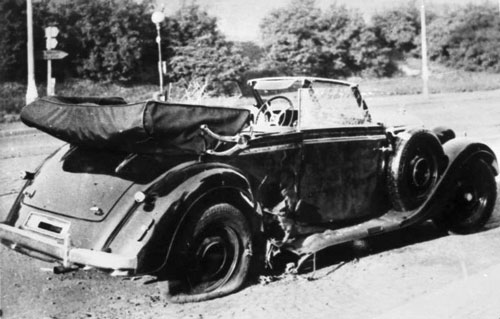 |
The plot to assassinate Heydrich began in Britain in late 1941. The operation was given the code name ‘Anthropoid’. Two Czechoslovakian soldiers were selected by the Special Operations Executive to carry out the attack: Jozef Gabčík, a Slovak; and Jan Kubiš, a Czech.
Gabčík and Kubiš parachuted into Czechoslovakia on December 28 1941 and, with the help of local resistance members, made preparations for the assassination attempt. The plan was to ambush Heydrich in Prague, during his daily commute in his open-topped Mercedes staff car. On the morning of May 27 1942, Gabčík and Kubiš at the tram stop on the curve near Bulovka Hospital.
|
As Heydrich’s car approached, Gabčík attempted to open fire, but his Sten gun jammed. Heydrich’s driver, SS-Oberscharführer Klein, stopped the car and he and Heydrich both fired their pistols at Gabčík. Kubiš then threw an anti-tank grenade at the rear of the car from close range, and Heydrich was wounded by shrapnel. Klein attempted to pursue the two soldiers, but was shot twice and wounded.
After an intensive search, the Nazi authorities eventually found Gabčík and Kubiš hiding in Karel Bormoejsky Church, along with five other paratroopers. 700 SS soldiers laid siege to the church and a lengthy gun battle ensued. Eventually the surviving resistance fighters committed suicide, rather than face capture and interrogation.
Although Heydrich’s injuries did not immediately appear to be mortal,
his condition quickly deteriorated, and he died of septicaemia eight
days after the attack – a fitting end to a truly disgusting individual.
|
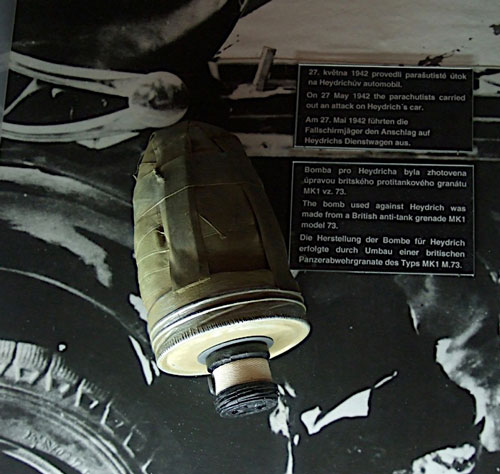 |
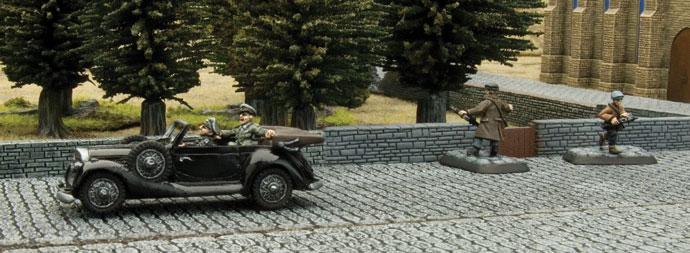 |
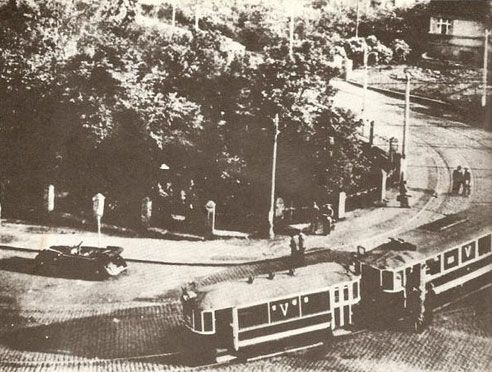
|
As tempting as it might be to celebrate Operation Anthropoid as the daring and well-deserved execution of a Nazi thug, I would be remiss to ignore the tragic aftermath. The Czech government-in-exile, who authorised Heydrich’s assassination, wanted to stiffen the resolve of the anti-German resistance in their country – an aim which was certainly achieved. However, they probably could not have anticipated the viciousness of the Nazi reaction. Over 13,000 people were arrested in the investigation, and around 5000 Czechs were killed in vicious reprisals, including attackers’ families and the clergy of the church where they had sheltered.
~ James.
|
Last Updated On Tuesday, November 13, 2012 by Blake at Battlefront
|
|
|